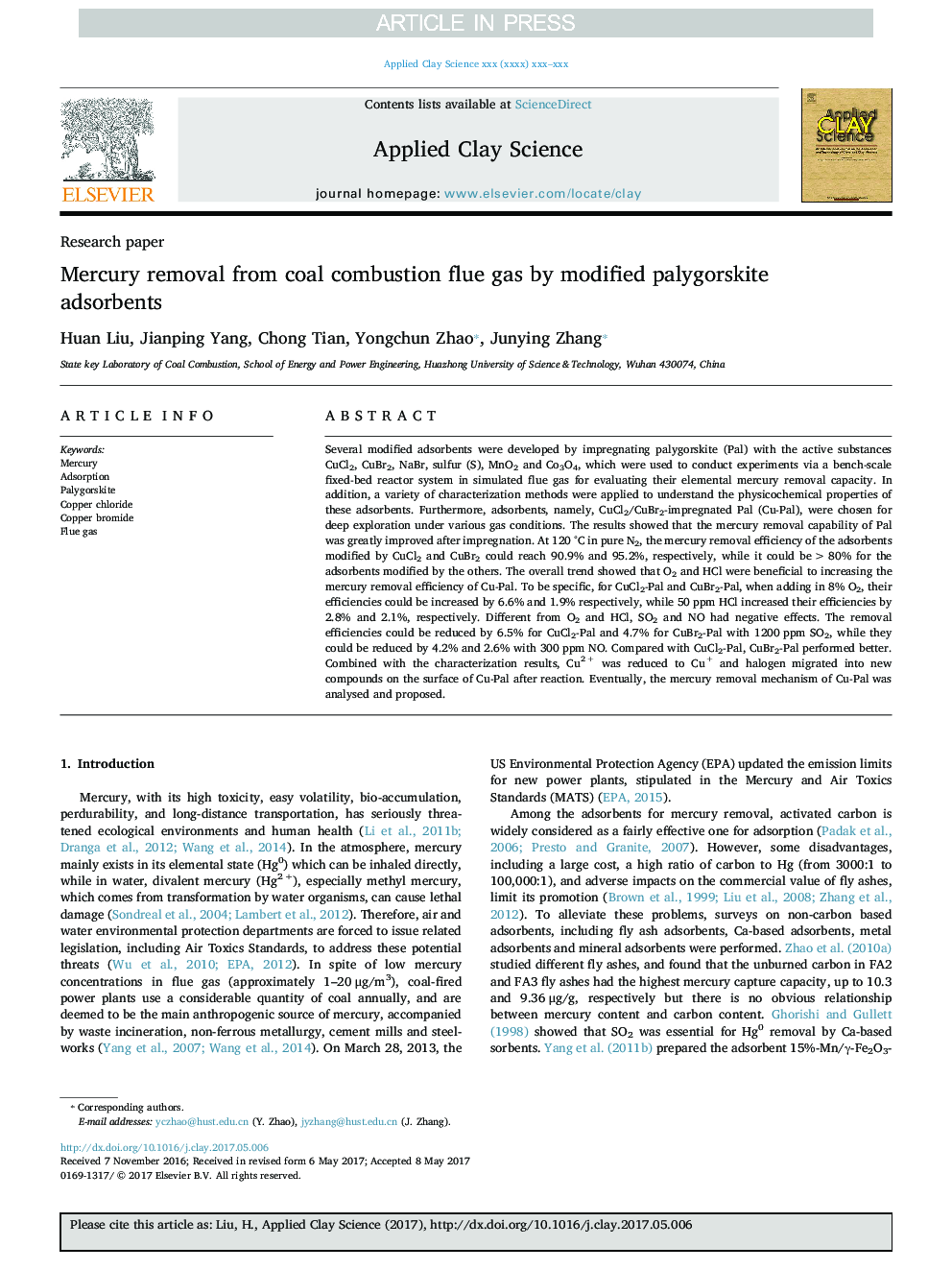| Article ID | Journal | Published Year | Pages | File Type |
|---|---|---|---|---|
| 5468566 | Applied Clay Science | 2017 | 8 Pages |
Abstract
Several modified adsorbents were developed by impregnating palygorskite (Pal) with the active substances CuCl2, CuBr2, NaBr, sulfur (S), MnO2 and Co3O4, which were used to conduct experiments via a bench-scale fixed-bed reactor system in simulated flue gas for evaluating their elemental mercury removal capacity. In addition, a variety of characterization methods were applied to understand the physicochemical properties of these adsorbents. Furthermore, adsorbents, namely, CuCl2/CuBr2-impregnated Pal (Cu-Pal), were chosen for deep exploration under various gas conditions. The results showed that the mercury removal capability of Pal was greatly improved after impregnation. At 120 °C in pure N2, the mercury removal efficiency of the adsorbents modified by CuCl2 and CuBr2 could reach 90.9% and 95.2%, respectively, while it could be > 80% for the adsorbents modified by the others. The overall trend showed that O2 and HCl were beneficial to increasing the mercury removal efficiency of Cu-Pal. To be specific, for CuCl2-Pal and CuBr2-Pal, when adding in 8% O2, their efficiencies could be increased by 6.6% and 1.9% respectively, while 50 ppm HCl increased their efficiencies by 2.8% and 2.1%, respectively. Different from O2 and HCl, SO2 and NO had negative effects. The removal efficiencies could be reduced by 6.5% for CuCl2-Pal and 4.7% for CuBr2-Pal with 1200 ppm SO2, while they could be reduced by 4.2% and 2.6% with 300 ppm NO. Compared with CuCl2-Pal, CuBr2-Pal performed better. Combined with the characterization results, Cu2 + was reduced to Cu+ and halogen migrated into new compounds on the surface of Cu-Pal after reaction. Eventually, the mercury removal mechanism of Cu-Pal was analysed and proposed.
Related Topics
Physical Sciences and Engineering
Earth and Planetary Sciences
Geochemistry and Petrology
Authors
Huan Liu, Jianping Yang, Chong Tian, Yongchun Zhao, Junying Zhang,
